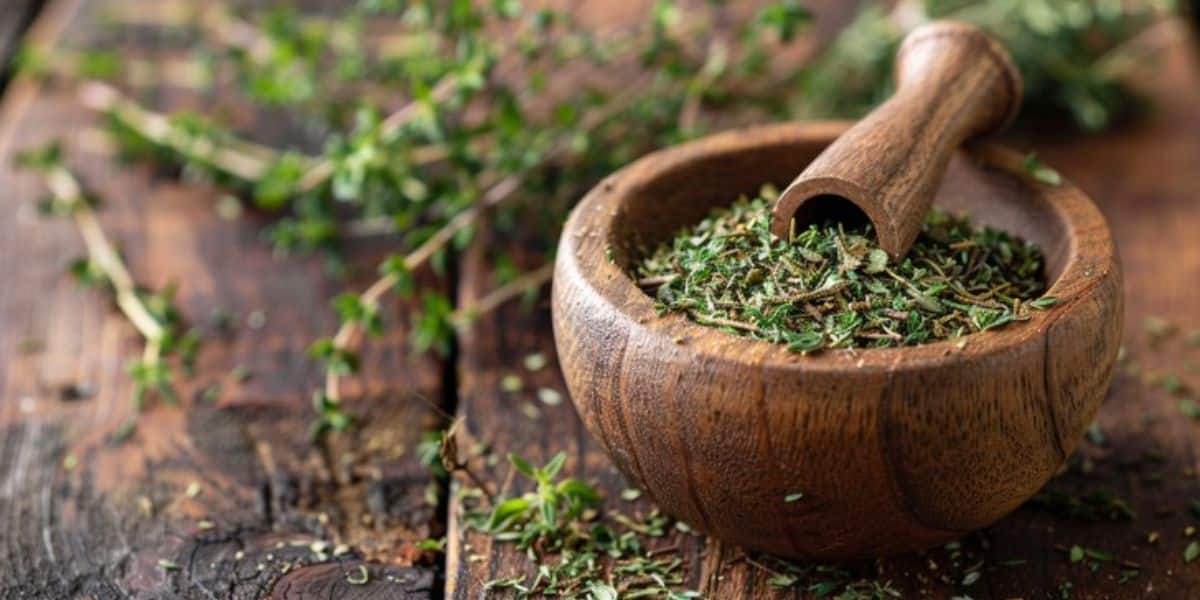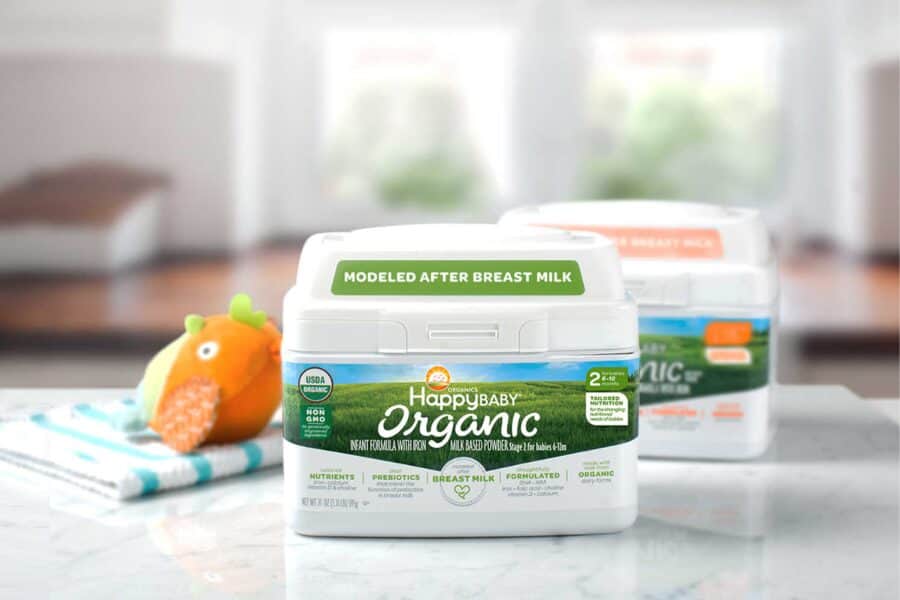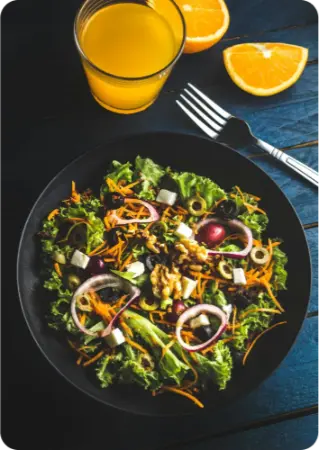Snacking is a big part of our day, thanks to all the ads and famous faces we see. But it’s easy to forget about best low calorie snacks that are good for us. That’s why we’ve put together a list of 26 tasty and healthy low calorie snacks that won’t break the bank. Whether you’re trying to eat better or just want some quick, guilt-free bites, this list has got you covered.
Zero Calorie Snacks: Let’s Burst Some Myths
Let’s clear up a common misconception right away: the idea of zero-calorie foods having negative calories is more myth than reality. While foods like celery, apples, strawberries, and lemons are often labeled as such, in truth, only water can claim to be truly zero calories. The term ’zero calories’ is frequently used in marketing, much like the term ’superfoods.’
Rather than chasing after elusive zero-calorie options, a smarter choice is to embrace the world of low calorie snacks. These snacks are not just beneficial for weight management due to their minimal calorie content; they also boast negligible amounts of sugar and trans fats. Plus, they’re packed with essential nutrients and are satisfying enough to keep hunger at bay throughout the day.
And don’t worry, opting for healthy low calorie snacks doesn’t mean sacrificing flavor or variety. Brands like Rhythm, Hippeas, and Crunchman have introduced exciting lineups of tasty low-calorie treats, ensuring that your journey towards healthier snacking is anything but dull. From light popcorn varieties to baked veggie chips, these best low calorie snacks offer a fun and flavorful alternative to the usual carrot and celery stick routine.
Try exploring these low-calorie snack options to make your healthy snacking journey more fun without the FOMO:

$8.20
Crunchmaster Protein Snack Crackers are a delicious, gluten-free option for a high-protein snack. Each serving provides 5 grams of plant-based protein. Made with non-GMO ingredients, these crispy crackers are perfect for satisfying your snack cravings healthily.

$24.99
Indulge in the tasty HIPPEAS Organic Chickpea Puffs in Vegan White Cheddar flavor. These gluten-free, vegan puffs are made with organic chickpeas, providing a crunchy, low-calorie snack that’s rich in fiber and protein. Perfect for a guilt-free treat anytime.

$9.93
Savor the unique flavors of TERRA Exotic Harvest Vegetable Chips with Sea Salt. These gluten-free, non-GMO chips are made from a blend of sweet potato, carrot, and pumpkin, offering a colorful and crunchy low-calorie snack that’s both delicious and nutritious.

$17.59
Enjoy a crunchy, protein-packed snack with Seapoint Farms Dry Roasted Edamame. This gluten-free, non-GMO treat offers 11 grams of plant-based protein per serving. Perfect for on-the-go snacking, it’s a healthy, low-calorie option that satisfies your cravings without guilt.

$38.94
Savor the delicious GoMacro MacroBar in Dark Chocolate + Almonds. Made with organic, non-GMO ingredients, this vegan and gluten-free protein bar provides 10 grams of plant-based protein. Perfect for a quick, healthy snack, it combines rich dark chocolate with crunchy almonds. Enjoy a nutritious treat that’s both satisfying and eco-friendly with sustainable packaging.
Also Read: Dairy-Free Protein Powders
26 Tasty and Healthy Low Calorie Snacks to Try
Here’s a list of low calorie fruits and veggies that are healthy and satiating. All of these foods have less than 60 calories per 100 grams of serving.
1. Apples

Calories: 56 Calories per 100 grams. USDA
An apple’s calorie count can’t outweigh its nutrition value. The age-old forbidden fruit, apples, are delicious and incredibly healthy.
They are a guilt-free snack, packed with fiber, potassium, vitamin C, and antioxidants. Try pairing sliced apples with peanut butter or a drizzle of honey for a satisfying afternoon treat.
2. Arugula

Calories: 25 Calories per 100 grams. USDA
This punchy green veggie packs a punch in terms of nutrients too. Arugula is filled with folates, potassium, calcium and Vitamin K. These dark leaves are rich in everything except Calories.
Try arugula or rocket as the British call it in various salads, soups, and even pasta. It goes well with fresh Roma tomatoes, aged cheeses, and citrus fruits.
3. Asparagus
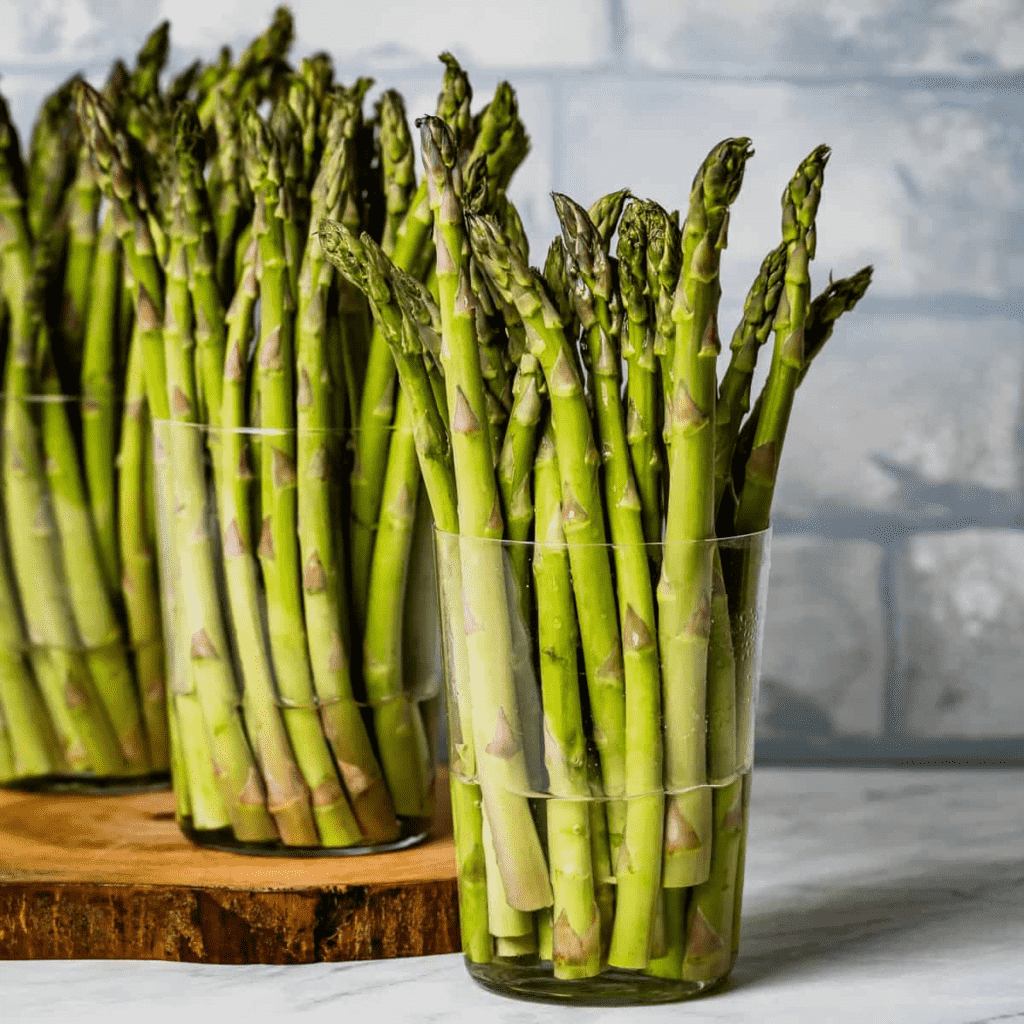
Calories: 20 Calories per 100 grams. USDA
With its delicate flavor and versatility, asparagus is a low-calorie winner. It offers antioxidants, minerals, vitamins (A, B12, C, K), and zero fat.
Whether boiled, steamed, or air-fried, asparagus pairs well with browned butter, sage, and chives for an appetizing experience.
4. Broccoli

Calories: 32 Calories per 100 grams. USDA
This funky-smelling vegetable is a powerhouse of nutrients. Be it purple, violet, or green. Broccoli supports heart health and heightened consumption is linked with immunity against certain cancers.
It is very rich in vitamins C and vitamin K. Broccoli can be consumed by steaming and stir-frying to retain maximum nutrients. Pairing Asian flavors such as soy sauce, chile, garlic, sesame, and ginger can elevate the sensory experience of otherwise bland broccoli.
Also Read: How to Tell If Broccoli Is Bad?
5. Brussels Sprouts
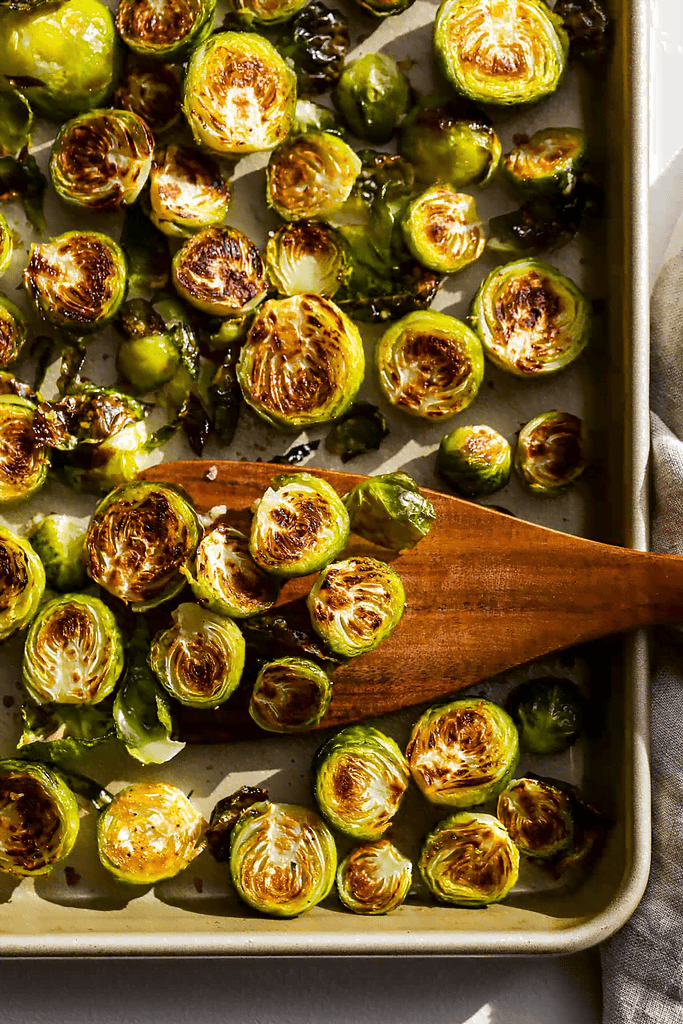
Calories: 45 Calories per 100 grams. UDSA
Related to cauliflowers, broccoli, kale, and collards, these cruciferous vegetables have a certain pungency familiar to their other relatives.
They are rich in Vitamin C, Folate, and Vitamin B6. They can be stir-fried, steamed, and roasted on an open fire to reduce their pungent smell. The sprouts are primarily consumed in Euro-American cuisines. It is generally seasoned with pepper, balsamic vinegar, and parmesan cheese.
6. Cabbage
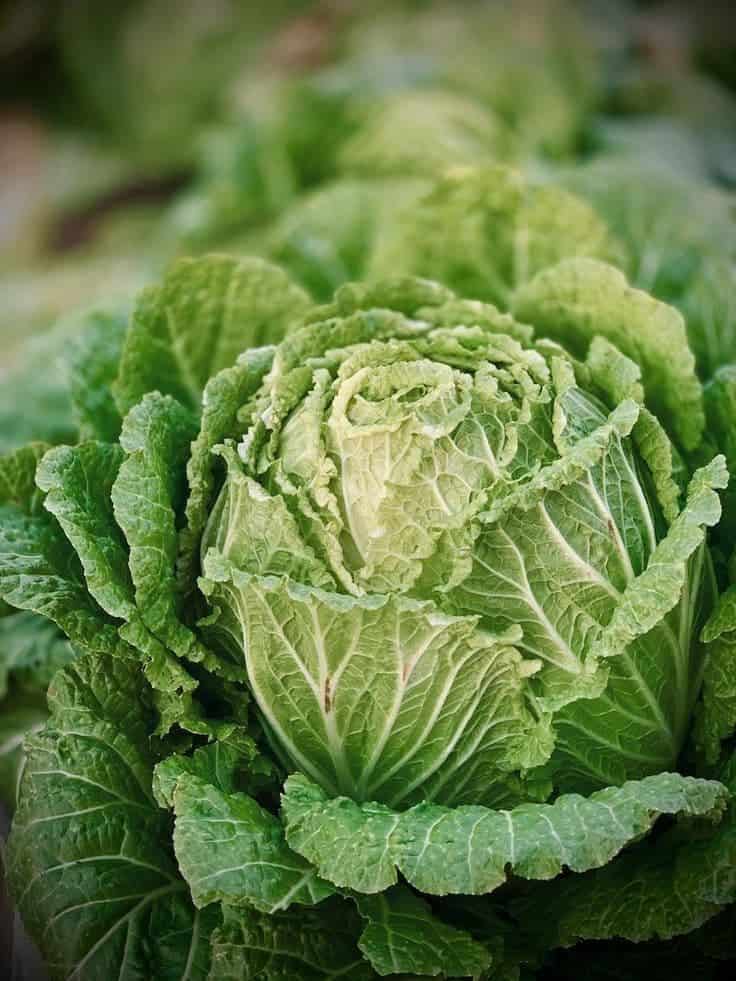
Calories: 24 Calories per 100 grams. USDA
Cabbage is a staple in east asian cuisines, it is well-loved and consumed worldwide in different forms. This vegetable is again rich in vitamin C and K like its broccoli and brussel sprout relatives.
A typical Chinese combination is cabbage julienne added in stews and served with pan-seared tofu. Cabbage is richer in nutrients in its fermented form around the world. Sauerkraut in central and eastern Europe and kimchi in Korea.
7. Carrots

Calories: 41 Calories per 100 grams. USDA
This root vegetable of Persian origins is healthy and popular across the globe. They are wild in their color palette, carrots can be purple, orange, red, yellow and white too. Their texture is crunchy while the flavor is grassy and slightly sweet.
Carrots can be added to rice dishes, chutneys, cakes, puddings and soups. They are abundant in beta carotene and other carotenoids such as alpha, gamma and lutein.
| Fun fact: the seeds and greens of carrots are edible and amply nutritious. |
8. Cauliflower
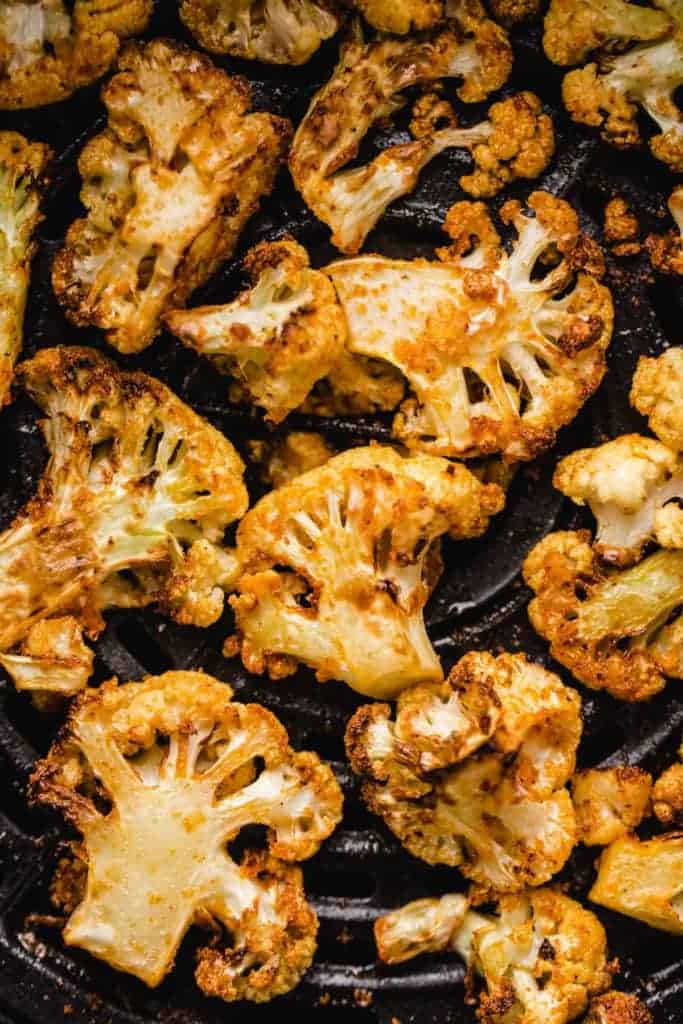
Calories: 26 Calories per 100 grams. USDA
Another member of the Brassica genus, this low-carb plant is grown in purple, green, white, orange, and yellow colors.
The head and leaves are edible while the florets or flesh are commonly consumed. Due to its low-carb nature, it has gained love in the gluten-free movement.
Rice and pizza bases made from cauliflower flour are common in the global north. People also swap cauliflower for mashed potatoes.
Also Read: Are PFAS in Sparkling Water Good For Your Health
9. Celery

Calories: 14 Calories per 100 grams. USDA
The flagbearer of low-calorie foods, celery is 95% water with moderate amounts of vitamins and phytonutrients. It is usually added to soups. Celery is often paired with onions and bell peppers to form the Cajun cuisine trifecta.
Try it with hummus or yogurt and sprinkle some Cajun spice blend.
10. Chard

Calories: 19 Calories per 100 grams. USDA
This green leafy vegetable also known as beet spinach is very rich in vitamin K and it has moderate amounts of vitamins A and C, iron, and manganese. Chards have to be boiled and sauteed to reduce bitterness.
Couple it with garlic and eggs to make healthy omelets and you’ll feel full for hours.
11. Clementine

Calories: 47 Calories per 100 grams. USDA
These tiffin sized fruits are of the citrus family. Their nutrient profile is akin to their siblings such as mandarins, tangerines and satsumas. They have a high vitamin C content.
A clementine is packed with nutritious fibers that keeps you feeling full, while keeping your sugar cravings in check.
12. Cucumbers

Calories: 15 Calories per 100 grams. USDA
The simile for coolness, cucumbers are truly fresh and refreshing. Cucumbers are fundamentally a zero fat food and a zero sugar food too!
They don’t have any significant amount of micronutrients but they can be part of drinks, salsas, salads, and sandwiches. Top sliced cucumbers with tajin or make a salad with radishes, sprouts, watermelon, and feta for the coolest snack around.
Also Read: Does Sugar Expire and What to Do with Expired Sugar?
13. Fennel

Calories: 31 Calories per 100 grams. USDA
An aromatic of the carrot family. Fennel is fragrant and nutritious. It has a high amount of vitamin C and potassium. It has a licorice and anise-like flavor. The bulb, the fruits, the leaves, and the flowers are all edible.
It can be cooked in a variety of ways and used in salads and spice mixes of Chinese and Bengali cuisines. The fruits are also used as a mouth freshener in the Indian subcontinent.
14. Grapefruit
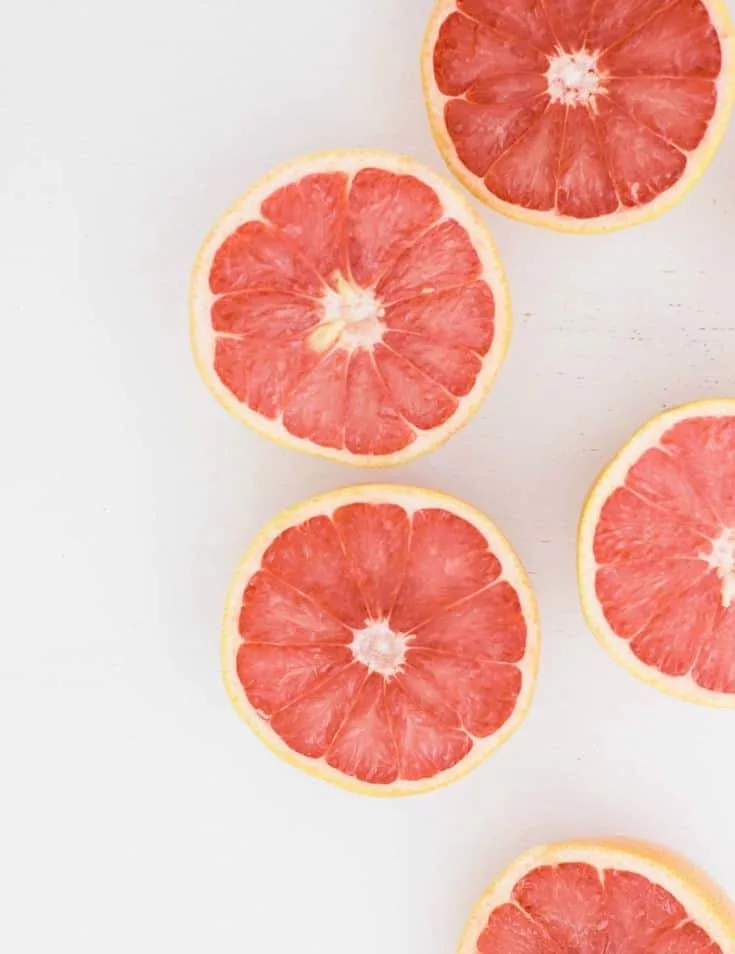
Calories: 30 Calories per 100 grams. USDA
These tart and semisweet citrus family members are best enjoyed on their own. Their phytonutrients have antioxidants and anti-inflammatory properties.
Grapefruits and other citrus are good for the body and therefore should be part of our regular diet. Therefore it is a great low calorie snack.
15. Kale
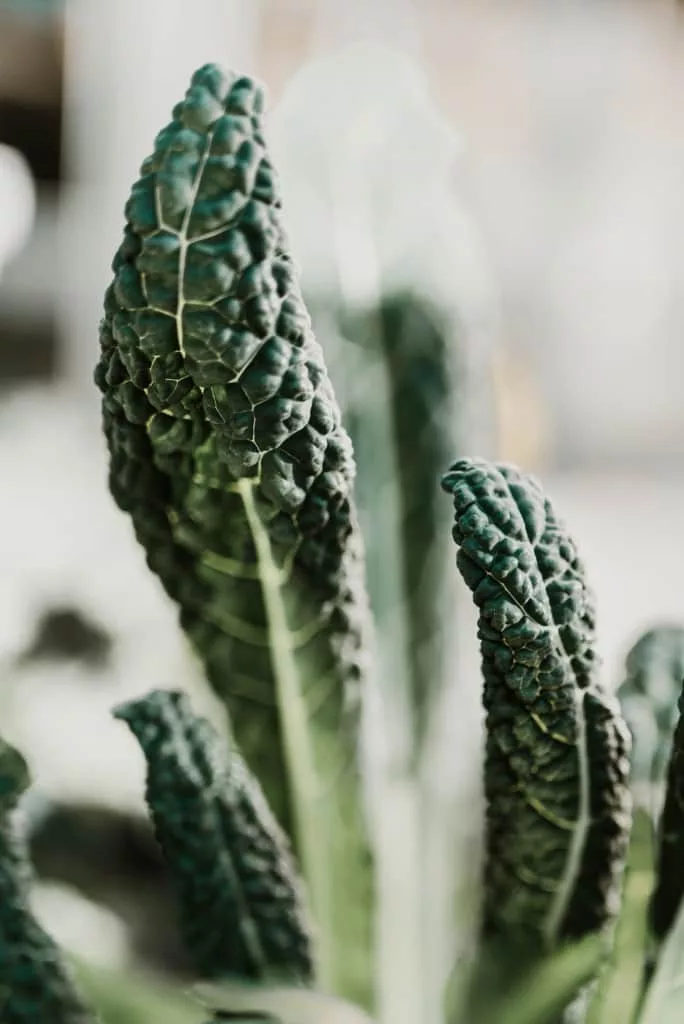
Calories: 38 Calories per 100 grams. USDA
This superfood has become mainstream in the public consciousness. It is associated with kale chips, soups, and smoothies for all the right reasons. Its nutritional profile is very impressive: vitamin A, vitamin K, vitamin C, copper, iron, manganese, folate, and vitamin B6.
So try out the famed zero sugar kale chips made with olive oil and flakey salt.
16. Mushrooms, White
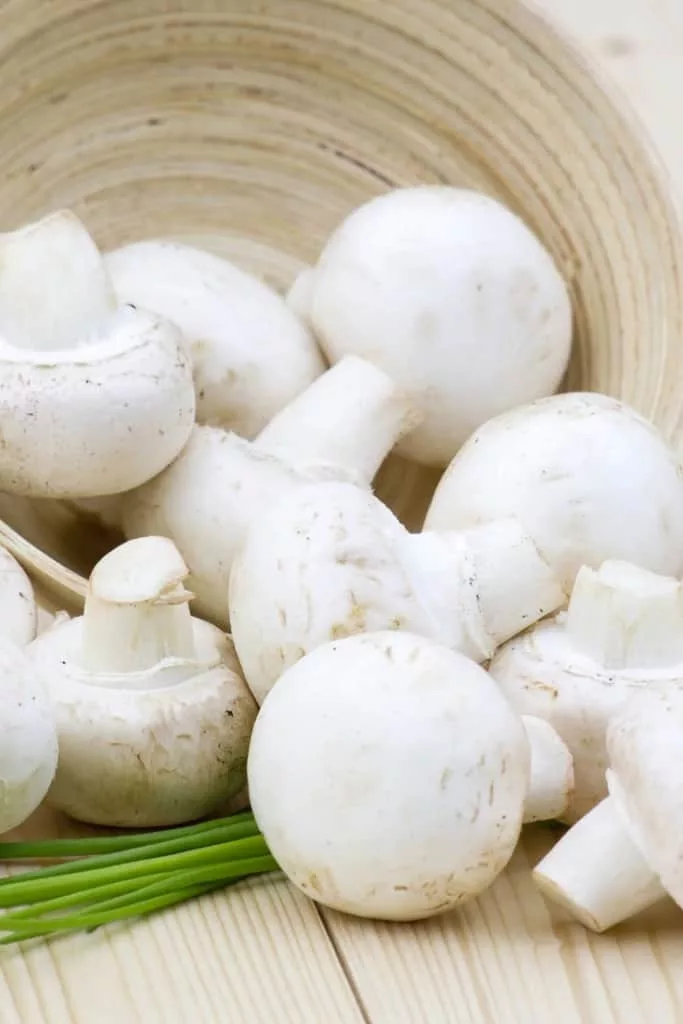
Calories: 28 Calories per 100 grams. USDA
This fungus is often clubbed with vegetables for ease. Mushrooms have a savory, almost meaty flavor. They are rich in vitamin B and selenium. The most common types of mushrooms are whites, crimini, and portobello all of which are the same. They only differ in maturity.
Mushroom consumption is on the rise because of its nutritional value and textural variety. Whites can be stir-fried in a variety of ways; try adding garlic and butter, fresh herbs, or different culinary sauces. They can elevate a dish for vegans and vegetarians with their meaty quality.
Also Read: When Is Watermelon Season?
17. Onions

Calories: 47 Calories per 100 grams. USDA
These are a fundamental part of almost every cuisine. Onions are highly nutritious and flavorful. They are in white, yellow, and red varieties. Onions are related to chives, garlic, and leeks. These alliums are said to be good for kidney health.
These pungent flavors are a common feature in Asian and Mexican cuisines. French onion soup, creamed onions, and onion chutney are dishes where onion is the central dish. They make a great base for curries and rice dishes too.
18. Peppers
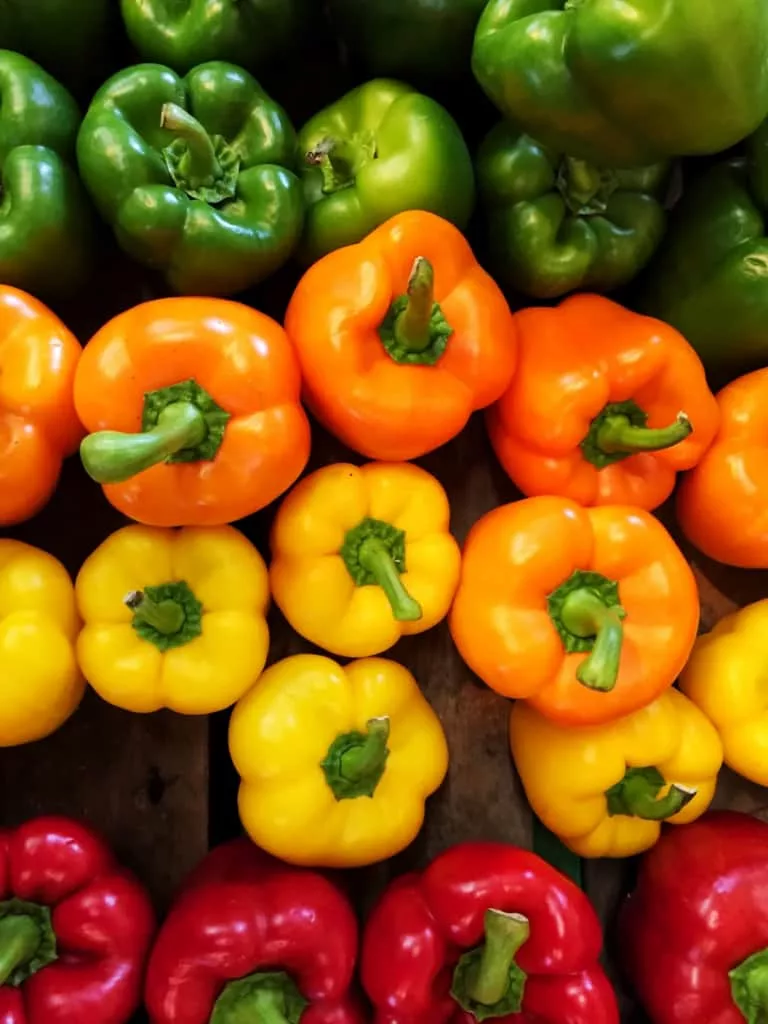
Calories: 26 Calories per 100 grams. USDA
A number of veggies (technically berries) come under the peppers label. Be it the spicy jalapenos or the mild bell peppers. They come in a spectrum of colors, sizes, and shapes.
Bell peppers or capsicums are high in vitamin C and lycopene. While chile peppers have moderately high amounts of B6. They go very well with East Asian cuisines.
19. Papaya
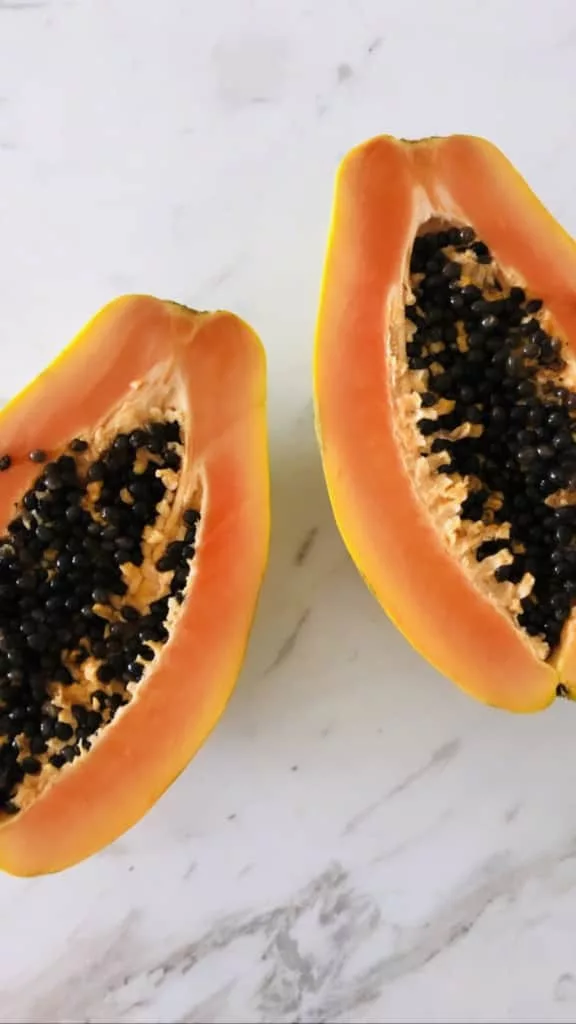
Calories: 43 Calories per 100 grams. USDA
This tropical fruit of amber flesh and ebony seeds is a common feature in Asian cuisines. Especially Thai, Filipino, and some parts of the Indian subcontinent. Its nutrient contents include vitamin C, vitamin A, and folate.
Ripe papayas can be eaten directly after removing the skin and seeds. Raw papayas can be added to soups and broths too.
20. Lettuce

Calories: 17 Calories per 100 grams. USDA
This zero-calorie hero is usually synonymous with salads and diets because it is essentially a zero-sugar food. An average serving of romaine lettuce or other lettuce such as iceberg or butterhead gives only 8 calories. But on the other side, it is low in nutrients too.
It has moderate to low levels of folate, vitamin A, and high levels of vitamin K. They are also high in fiber and water content. Their consumption is often filling when paired with slightly fatty and carb-rich foods such as avocados and multigrain bread.
21. Strawberries
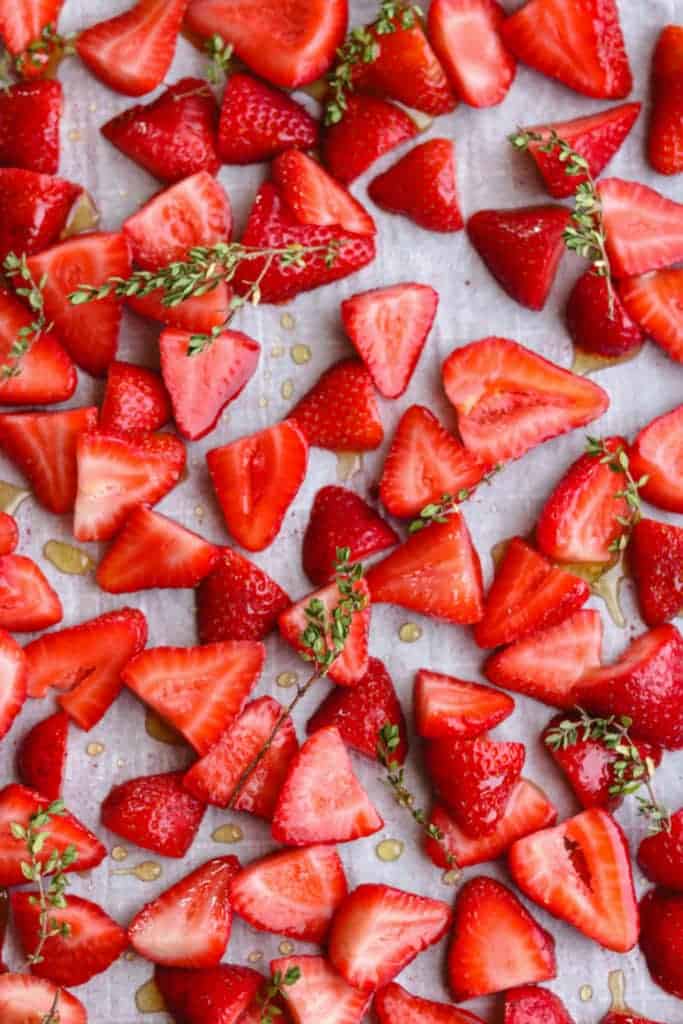
Calories: 32 Calories per 100 grams. USDA
A staple for desserts, drinks, perfumes, and snacks. This fruit is rich in vitamin C and manganese. Strawberry can be paired with balsamic vinegar, cheese, cream, chocolate, and an array of herbs and spices.
These can be added to champagne, yogurt, ice cream, and even carbonated drinks. Try this antioxidant-rich versatile fruit for sure. Bonus! It is essentially a fat-free food.
22. Spinach

Calories: 23 Calories per 100 grams. USDA
Probably the OG superfood, snacked on by Popeye since 1929. Spinach is a leafy vegetable that is packed with provitamin A, vitamin K, folate, and major carotenoids, this combination is good for the eyes. The best combination for spinach is undoubtedly garlic and butter.
Spinach can be blended into soups, and smoothies too. So make this low-calorie food a part of your diet. One more! Unsurprisingly enough spinach is a zero-sugar food too.
23. Peas: Sugar, Snap, Snow
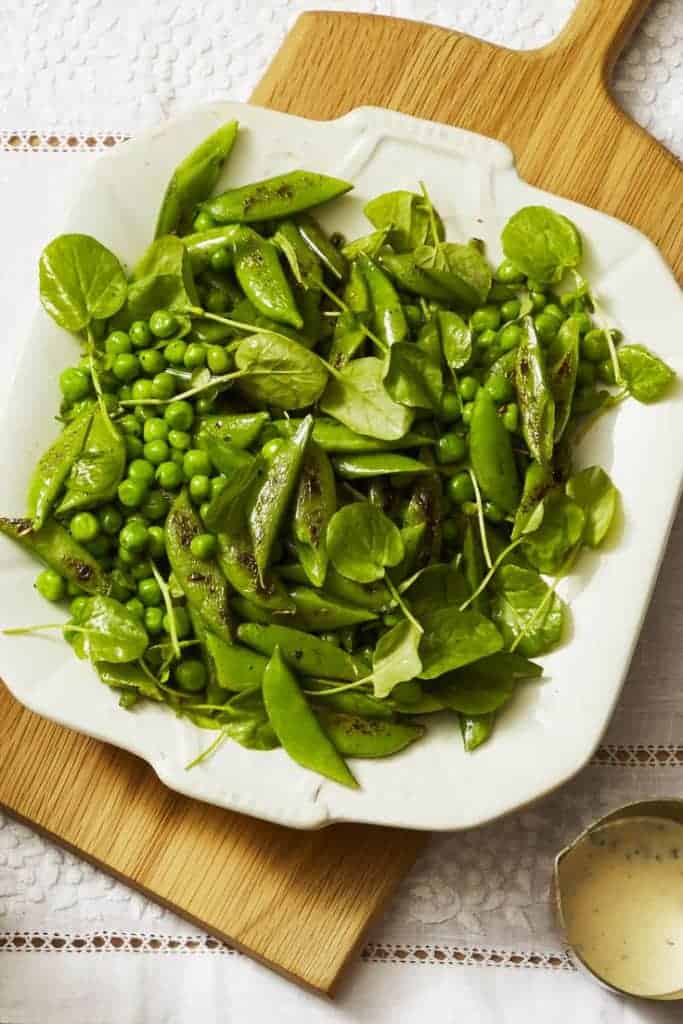
Calories: 42 Calories per 100 grams. USDA
These pod vegetables are zero fat foods and high in protein when made into split dried peas. Peas can be eaten boiled, stir-fried, or raw if they are tender. They are super filling and eaten around the world in the form of soups, pies, or stews.
Peas of all kinds make for a great snack. But we’d always suggest searing them to make the fibers more digestible.
24. Tomatoes
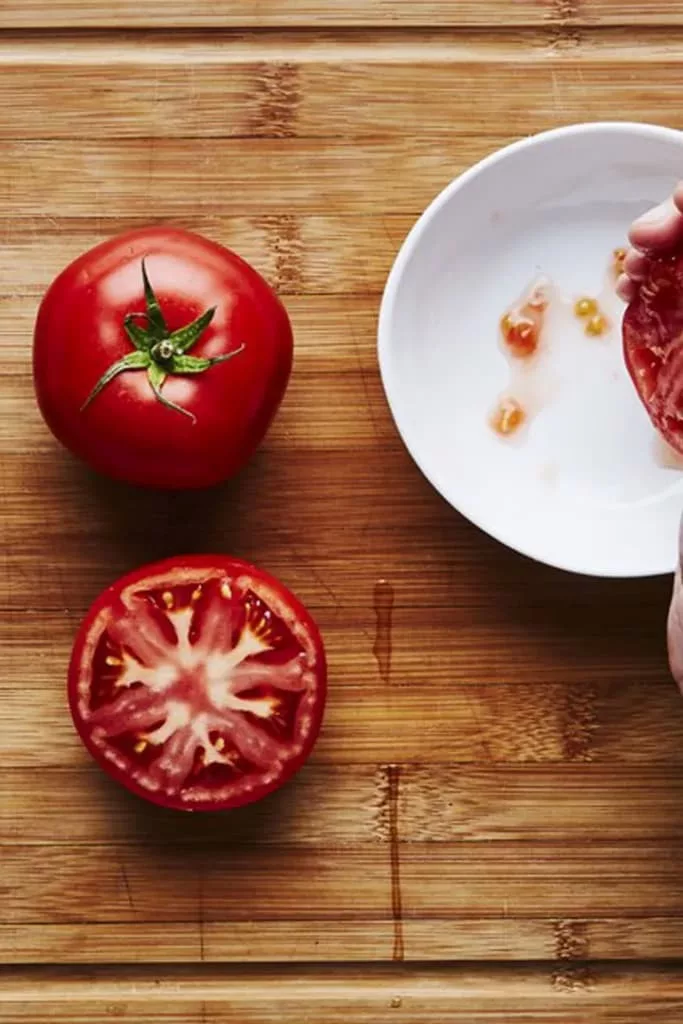
Calories: 18 Calories per 100 grams. USDA
The second most consumed vegetable (technically a berry) after potato. These zero-calorie fruits are savory and have an umami taste. They can be eaten raw, cooked, or in a pureed form.
They are extremely versatile but predominantly used in savory dishes. It gives the dishes a fresh, tangy, and acidic flavor, it is usually paired with fatty ingredients to cut the meaty or cheesy flavor.
25. Watermelon

Calories: 30 Calories per 100 grams. USDA
The OG summer food. This red-green beauty is packed with vitamin C and the seeds taste great when toasted. Watermelon coolers and fruit salads are the most common form of eating them. It tastes good with fresh mint and feta cheese.
Another form is pickled watermelons, this tangy, spicy, and sweet dish goes well with meaty and savory flavors in general. Ex: burgers and steak.
26. Zucchini
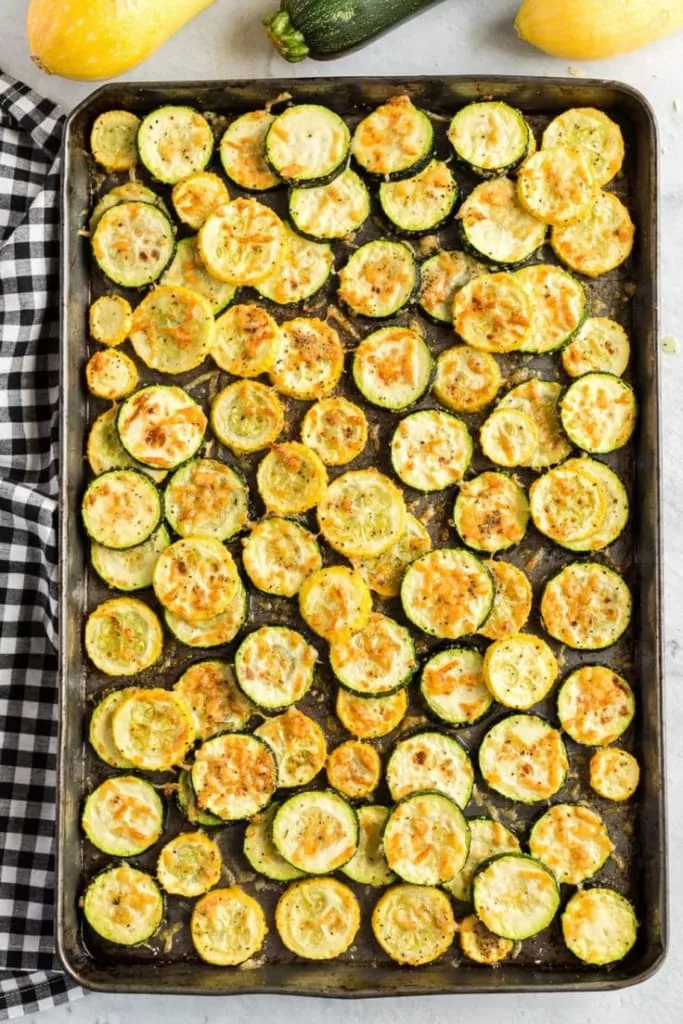
Calories: 17 Calories per 100 grams. USDA
This summer squash is a great option for chips, curries, and sautees. It has a mild taste therefore it can absorb a variety of different flavors. It is popularly consumed as zoodles or zucchini noodles, as no-carb pasta alternatives. It is great when sauteed with butter and garlic.
It can be tossed with parmesan or chile oil for an added kick. Or you can eat sliced tender zucchini topped with a dash of lemon, salt, and pepper. This will make a proper zero-fat/zero-sugar snack.

Bonus Tips – Elevate Your Experience with Best Low Calorie Options
Munching on low-calorie snacks can be a great way to satisfy your cravings while maintaining a healthy diet. Here are some bonus tips to make your snacking experience even more enjoyable:
- Mix and match: Don’t limit yourself to just one type of low-calorie snack. Experiment with different combinations to create tasty and nutritious snack options. For example, you can pair sliced apples with a small portion of low-fat cheese or enjoy carrot sticks with hummus for a satisfying crunch.
- Portion control: Even though low-calorie snacks are healthier options, it’s still important to practice portion control. Instead of mindlessly snacking straight from the bag or container, measure out a reasonable portion size and put it in a separate bowl or plate. This will help prevent overeating and keep your calorie intake in check.
- Spice it up: Add some flavor and excitement to your low-calorie snacks by incorporating herbs, spices, and seasonings. Sprinkle some chili powder or paprika on cucumber slices, or toss roasted cauliflower florets with a dash of cumin and turmeric. Experimenting with different flavors can make your snacks more interesting and enjoyable
- DIY snacks: Instead of relying solely on pre-packaged low-calorie snacks, consider making your own. This way, you have more control over the ingredients and can customize the flavors to your liking. You can bake kale chips, make homemade salsa with fresh tomatoes and peppers, or create a trail mix with a variety of nuts, seeds, and dried fruits.
- Stay hydrated: Sometimes, we mistake thirst for hunger and end up snacking unnecessarily. Stay hydrated by drinking an adequate amount of water throughout the day. When you feel the urge to snack, try having a glass of water first and see if the craving subsides. If you’re still hungry afterward, reach for a low-calorie snack option.
- Mindful eating: Practice mindful eating while enjoying your low-calorie snacks. Slow down, savor each bite, and pay attention to the flavors and textures. By being present and mindful, you’ll not only enhance your eating experience but also become more aware of your body’s hunger and fullness cues.
Remember, low-calorie snacks can be both nutritious and delicious. By incorporating these bonus tips into your snacking routine, you can make the most out of your low-calorie choices while maintaining a healthy and balanced diet.
The Ecowiser Take on Zero Calorie Snacks
The dieting industry’s fixation on zero-fat sugar foods influences an unhealthy pattern where eating is focused on aesthetics and immediate results. This buzzword culture needs to go for a toss, as it encourages exclusive trends that keep diversity out of our diet. Instead, you should integrate low-calorie snacking as it is effective, accessible, and safe.
Well-managed eating habits are essential for achieving fitness goals. While diet fads and unnecessary dietary restrictions have their limits, a thriving and satisfied body requires adequate nutrition—and a dash of flavor now and then! Plus, there’s an ethical dimension to consider as well!
Try products that are made in small batches, on organic farms, and those that support local species over invasive ones. Elevate the way you eat and go for a diet that is better for you and better for the planet too!
Want to begin your tryst with healthy snacking? It is time for a switch, not a purge. Opt for these low-calorie options to keep yourself filled and your day more active than before. Your journey to a better life begins here.
Dive deeper into sustainable living! Explore our food blogs on Ecowiser for eco-friendly swaps and the best vegan products. Make a change, one bite at a time.



